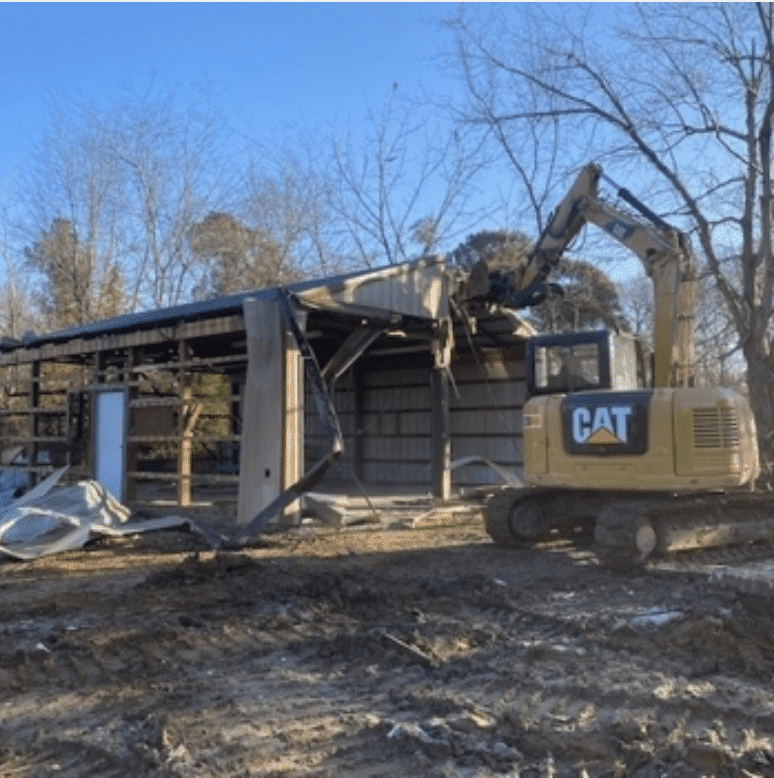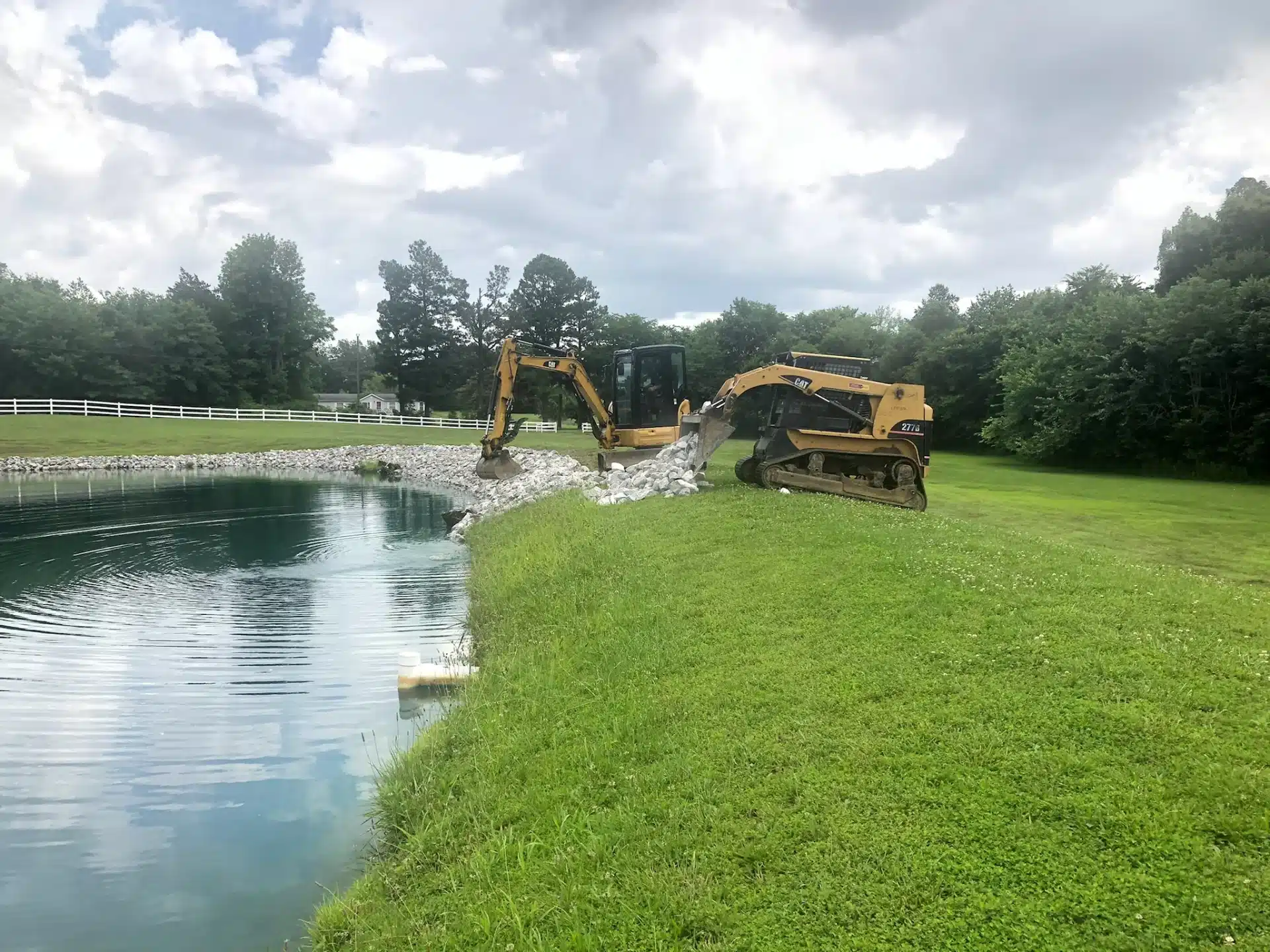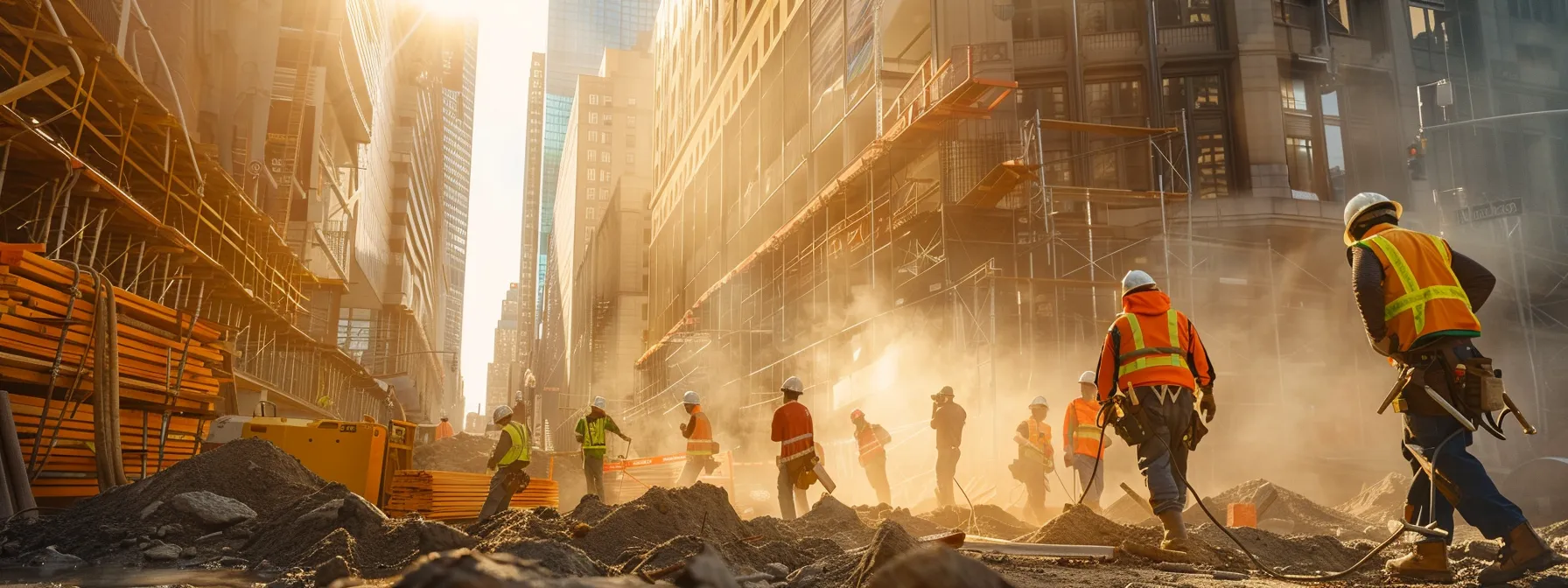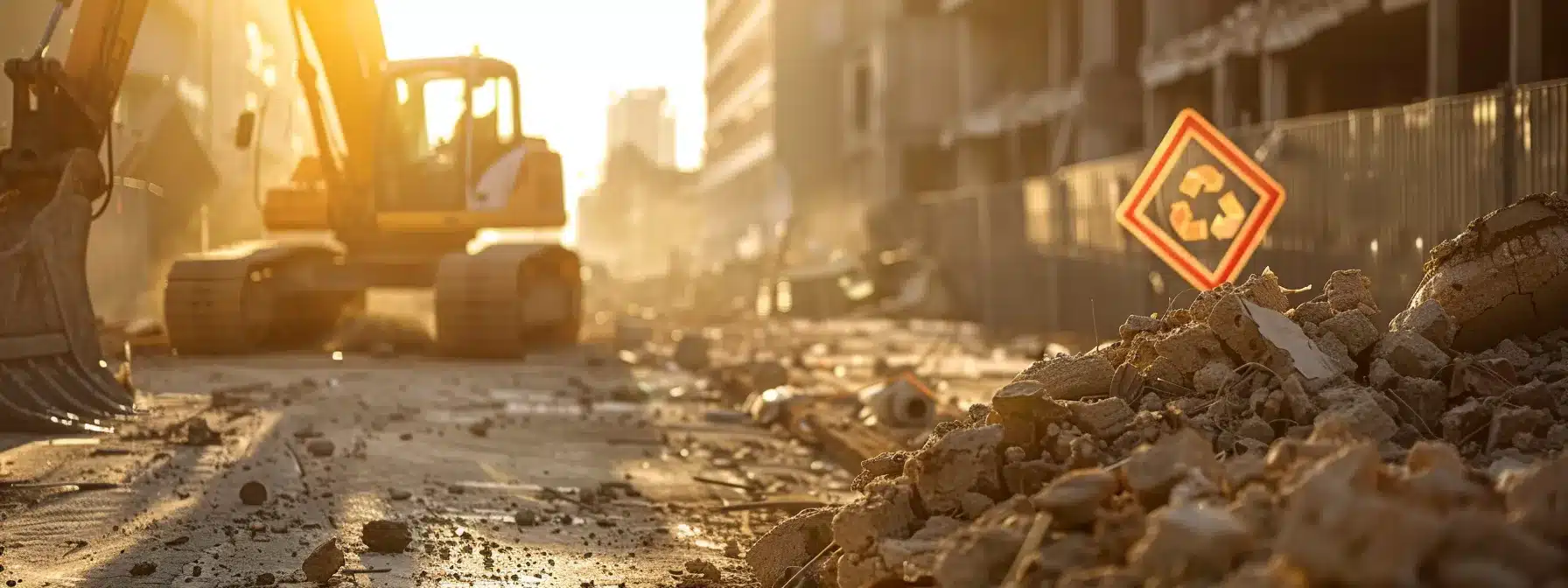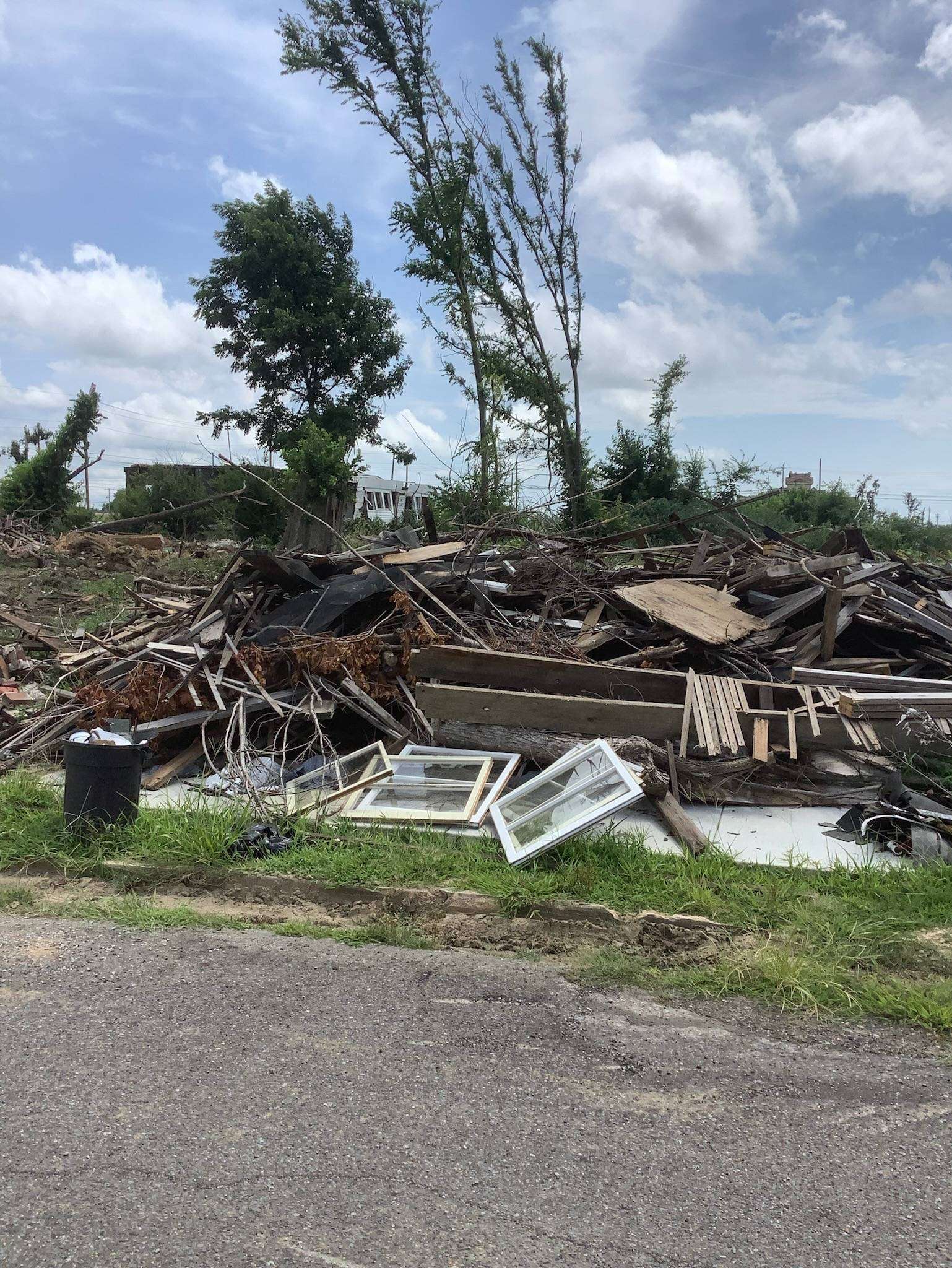Erosion control is a crucial aspect of environmental conservation and land management. In this article, we will delve into the fundamentals of erosion control, exploring its importance, causes, and different methods of implementing erosion control.
From natural causes to human activities, we will discuss the various factors contributing to erosion. We will provide insights into choosing the right erosion control method, as well as best practices for effective erosion control.
Join us as we uncover the key strategies for protecting our land and environment.
Key Takeaways:
- Erosion control is the practice of preventing or managing erosion to protect land and water resources.
- Erosion control is important because it helps prevent loss of soil, property damage, and negative environmental impacts.
- Factors such as natural causes and human activities can contribute to erosion, making it necessary to implement erosion control methods.
What is Erosion Control?
Erosion control refers to the practices and techniques implemented to prevent or minimize soil erosion, which is the process of soil loss due to various factors such as water runoff, wind, or human activities.
Preserving soil quality is essential for maintaining healthy ecosystems and sustainable agriculture. Implementing erosion control measures helps in retaining the topsoil, which is rich in nutrients crucial for plant growth.
- Vegetative cover: Planting grass or trees to anchor the soil
- Terraces: Constructing on sloped lands to slow down water flow
- Silt fences: Using to trap sediment
These methods not only prevent erosion but also help in improving water quality by reducing sediment runoff.
Why is Erosion Control Important?
Erosion control is crucial in construction projects and land management to mitigate the adverse effects of soil erosion on vegetation, water quality, and the overall ecosystem.
Sediment control plays a vital role in construction activities by preventing the transportation of sediments to nearby water bodies, preserving their quality. One effective way to prevent erosion is through maintaining vegetation cover, which stabilizes soil and reduces runoff. Implementing erosion control measures like silt fences, sediment traps, and bioengineering techniques not only prevent erosion but also enhance site aesthetics and long-term site sustainability.
What Causes Erosion?
Erosion can be caused by both natural factors such as rainfall and wind as well as human activities like construction and farming, highlighting the need for effective erosion control techniques to prevent soil loss.
Various natural processes contribute to erosion, such as water flow wearing away soil layers over time and wind carrying particles that scrape and displace topsoil. Human-induced erosion often results from improper land management practices like deforestation, overgrazing, and excessive tilling which can strip away protective vegetation cover and disturb soil structure.
The impact of erosion on soil stability can lead to decreased fertility, reduced water retention capacity, and increased susceptibility to landslides. Erosion can negatively affect water quality by depositing sediment in water bodies, leading to pollution and habitat degradation.
To mitigate these issues, erosion prevention practices such as terracing on sloped landscapes, planting cover crops, and implementing proper stormwater management techniques are vital. These measures help stabilize soil, reduce surface runoff, and prevent sedimentation, contributing to sustainable land use and biodiversity conservation.
Natural Causes
Natural causes of erosion include surface erosion from rainfall, stormwater runoff, and wind, leading to soil loss and sediment transport.
Surface erosion occurs as raindrops directly impact the soil, dislodging particles and loosening the top layer. This process is accelerated by the flow of stormwater, which carries away eroded soil particles. In addition, wind erosion further disrupts soil stability by transporting fine particles through suspension and surface creep. This continuous movement of sediment due to natural elements contributes to the gradual degradation of soil quality and structure.
Human Activities
Human activities such as construction projects, land development, and agricultural practices can accelerate soil erosion, necessitating effective erosion prevention measures to minimize environmental impact.
Construction sites and land development areas are particularly vulnerable to soil erosion due to the disturbance of natural topography and vegetation cover. The removal of vegetation, such as trees and grass, exposes the soil to erosion from wind and water. The compacting of soil during construction activities can reduce its ability to absorb water, leading to increased surface runoff and erosion.
Implementing sediment control measures such as silt fences, sediment basins, and erosion blankets can help stabilize the soil and prevent sediment runoff into nearby water bodies. Maintaining proper drainage systems and utilizing practices like erosion control blankets and hydroseeding can significantly reduce the erosion potential of construction sites.
What Are the Different Types of Erosion Control Methods?
Various erosion control methods include vegetative cover, erosion control blankets, and other techniques that aim to prevent soil erosion and promote sustainable land management.
One of the key elements in erosion prevention is the use of vegetation. Plant roots hold soil particles together, reducing the impact of rainfall and runoff. Erosion control blankets are another effective method that provides immediate protection to soil surfaces. These blankets are made of natural or synthetic materials and help stabilize the soil, allowing plants to grow and establish roots.
To further enhance erosion control, techniques such as:
- terracing
- contour plowing
- cover cropping
can be implemented based on specific land conditions. These techniques offer sustainable solutions to prevent soil erosion and promote healthy ecosystems.”
Vegetative Erosion Control
Vegetative erosion control utilizes plants, trees, and vegetation cover in forested areas to stabilize soil, reduce sediment transport, and enhance erosion control design for sustainable land management.
By strategically planting and maintaining vegetation along slopes and waterways, this method effectively minimizes erosion, promotes biodiversity, and provides habitat for wildlife within the forest ecosystem. The selection of sediment control options in vegetative practices is crucial, with techniques such as silt fences, erosion control blankets, and bioengineering solutions being commonly employed. These options help to trap sediment, slow water flow, and prevent soil loss, thereby safeguarding the landscape from degradation.
Structural Erosion Control
Structural erosion control methods involve the use of physical structures such as barriers, sediment traps, and erosion control systems to manage runoff, limit soil loss, and ensure effective erosion control in construction scheduling.
Physical barriers play a crucial role in mitigating the impact of erosion by diverting the flow of water and preventing soil erosion on construction sites. These barriers can be made of various materials like geotextiles, rocks, or concrete, strategically placed to impede the movement of sediment-laden water.
Sediment traps, on the other hand, act as retention ponds that collect sediment-laden runoff. They allow sediments to settle out of the water before it flows further, reducing the sediment transport downstream and minimizing environmental impact.
Integrating erosion control mechanisms into construction schedules is vital to ensure that erosion prevention measures are implemented timely and consistently throughout the project. By including erosion control as a planned component, construction teams can proactively address potential issues, protect the environment, and adhere to regulatory requirements.
Bioengineering Erosion Control
Bioengineering erosion control involves using natural materials and vegetation-based solutions to stabilize slopes, control erosion, and meet erosion control limits set for sustainable site management practices.
One of the key principles of bioengineering erosion control is to strategically utilize plant roots and natural materials to reinforce soil structure, preventing erosion while fostering ecological balance. By incorporating living plants such as grasses, shrubs, and trees into erosion-prone areas, bioengineering techniques help in reinforcing stability and decreasing surface runoff that contributes to erosion.
These natural materials act as barriers, reducing the impact of water flow and promoting soil infiltration, which is crucial for managing erosion effectively. Bioengineering techniques align with the principles of sustainable land management by utilizing the inherent properties of vegetation and natural materials to mitigate erosion risks while preserving the ecosystem’s integrity.
Chemical Erosion Control
Chemical erosion control methods involve the use of stabilizers, polymers, or chemical treatments to reduce soil erosion, enhance sediment control, and supplement erosion control toolbox for comprehensive erosion prevention strategies.
One common application of chemical erosion control is through the use of stabilizers, which are materials added to the soil to enhance its strength and cohesion, preventing erosion due to water runoff. These stabilizers can be in the form of fibers, such as straw or coconut, or chemical compounds that bind soil particles together.
Additionally, polymers are often utilized to improve soil structure and stability by forming a protective layer over the soil surface, preventing erosion caused by wind or water. These polymers are either mixed with the soil or applied as a surface treatment to create a durable barrier against erosion.
Regarding sediment control, certain chemical treatments can be used to flocculate fine particles and settle them out of suspension, reducing turbidity and improving water quality. These treatments aid in sedimentation, preventing sediment-laden runoff from polluting water bodies and clogging drainage systems.
Mechanical Erosion Control
Mechanical erosion control methods utilize physical means such as erosion control blankets, earthworks, and sediment traps to implement erosion prevention practices, manage sediment control measures, and oversee erosion control efforts by construction managers.
These erosion control blankets, also known as erosion control mats, are typically made from organic or synthetic materials and are placed on slopes to prevent soil erosion by reducing the impact of raindrops and promoting vegetation growth.
Earthworks, which involve reshaping the land surface through processes such as grading and terracing, help to control runoff and minimize soil erosion by creating barriers that slow down water flow.
Sediment traps, often constructed near disturbed areas to capture sediment-laden runoff, play a crucial role in reducing sediment transport and minimizing the impact of soil erosion on downstream water bodies.
It’s essential for construction managers to diligently oversee the installation and maintenance of these erosion control measures to ensure compliance with regulations, minimize environmental impact, and prevent costly damage to surrounding areas from erosion and sediment runoff.
How to Choose the Right Erosion Control Method?
Selecting the appropriate erosion control method involves conducting a thorough site assessment, considering cost, maintenance requirements, environmental impact, and effectiveness of erosion control measures to ensure smart erosion management.
Site assessment is crucial as it helps in understanding the unique characteristics of the area, such as soil composition, slope, and vegetation cover, which determine the susceptibility to erosion.
Identifying these factors allows for the selection of the most suitable erosion control method tailored to the specific needs of the site, thereby optimizing its effectiveness.
Cost considerations play a significant role in decision-making, as different erosion control techniques vary in initial investment and long-term maintenance expenses.
Choosing a method that aligns with the available budget is essential to ensure sustainability in erosion control efforts.
Environmental impact assessment is vital to minimize any potential harm caused by erosion control measures to the ecosystem and surrounding areas. Opting for eco-friendly erosion control solutions promotes long-term environmental sustainability and supports biodiversity.
Maintenance requirements should be evaluated to guarantee the feasibility of upkeep over the erosion control structure’s lifespan.
Regular maintenance ensures the continued effectiveness of erosion control measures and extends their durability for prolonged erosion management.
By carefully considering these factors, one can implement effective erosion control strategies that not only address current erosion issues but also contribute towards smart erosion management practices for a sustainable environment.
Site Assessment
Site assessment for erosion control involves evaluating soil conditions, terrain features, and potential risks with inputs from experts like construction site operators and regulatory bodies such as NYDEC to develop a comprehensive erosion control plan.
During the site assessment process, operators play a crucial role in scrutinizing soil quality, drainage patterns, and topography to identify vulnerable areas prone to erosion. They work closely with environmental specialists and regulatory agencies to ensure compliance with NYDEC guidelines and local regulations. By conducting thorough inspections and utilizing advanced technologies like drones and GIS mapping, these operators gather essential data to create an effective erosion control plan that addresses specific site challenges. This detailed plan typically includes measures such as sediment controls, slope stabilization, and vegetation management to mitigate erosion risks and safeguard the surrounding environment.
Cost and Maintenance
Considering cost and maintenance factors in erosion control decisions involves assessing long-term expenses, resource availability, and adopting practices outlined by USDA and Erosion Control Basics to ensure sustainable sediment control measures.
One crucial aspect in erosion control is the careful evaluation of costs associated with different control methods. Implementing cost-effective solutions not only helps in budget management but also ensures the long-term sustainability of erosion control measures.
The US Department of Agriculture (USDA) and the guidelines put forth by Erosion Control Basics offer valuable insights into effective erosion control strategies that are both efficient and economical. By integrating these guidelines, organizations and land managers can strike a balance between cost efficiency and environmental responsibility in sediment control practices.
Environmental Impact
Evaluating the environmental impact of erosion control methods includes adherence to regulations set by agencies like the Minnesota Pollution Control Agency, following stormwater regulations, and applying erosion control principles to minimize ecological disturbances.
One crucial consideration in erosion control is the selection of appropriate erosion control measures that not only effectively prevent erosion but also have minimal impact on the surrounding environment.
Regulations from agencies such as the Minnesota Pollution Control Agency play a significant role in ensuring that erosion control practices meet environmental standards and guidelines. Compliance with stormwater regulations is essential to prevent pollutants from entering water bodies and causing harm to aquatic life. By implementing erosion control measures that align with regulatory standards and best practices, it is possible to mitigate the ecological disruptions caused by erosion processes.
Effectiveness
Assessing the effectiveness of erosion control methods involves using tools like the Revised Universal Soil Loss Equation, implementing sediment control measures, and integrating erosion and sediment control practices to achieve optimal soil conservation outcomes.
Implementing erosion control measures is imperative in preventing the loss of topsoil and maintaining soil fertility. The Revised Universal Soil Loss Equation (RUSLE) provides a standardized approach to quantify soil erosion rates based on rainfall, soil type, slope, and land cover. By utilizing this model, land managers can accurately assess erosion risks and tailor erosion control strategies accordingly to mitigate soil loss.
Sediment control measures, such as silt fences, check dams, and sediment basins, play a crucial role in trapping sediment runoff before it enters water bodies. These measures help prevent soil particles from being carried away, reducing the impact of erosion on water quality and aquatic habitats.
What Are the Best Practices for Erosion Control?
Implementing best practices for erosion control involves proper planning and design, using appropriate materials, regular maintenance routines, and collaborating with experts to ensure effective erosion and sediment control measures on construction sites.
One of the key aspects of effective erosion control is the meticulous planning and design of erosion and sediment control measures. This includes conducting thorough site evaluations to identify potential risk areas and developing comprehensive strategies to mitigate erosion. By prioritizing detailed planning, construction teams can proactively address erosion issues before they escalate, minimizing environmental impact and project delays.
Proper Planning and Design
Effective erosion control begins with proper planning and design, incorporating erosion prevention measures, utilizing resources like Caltrans Erosion Control Toolbox, and selecting appropriate erosion control methods tailored to site-specific needs.
Proper planning is crucial as it sets the foundation for successful erosion control strategies. By conducting a thorough site assessment,
identifying vulnerable areas and potential risks,
engineers can develop a comprehensive erosion prevention plan. This plan may involve implementing measures such as slope stabilization, vegetation management, and sediment control structures. The
Caltrans Erosion Control Toolbox
serves as a valuable resource, offering guidance, best practices, and tools for effective erosion control. Site-specific erosion control methods, like bioengineering techniques or geotextile applications, can be customized to address unique challenges and optimize erosion control outcomes.
Use of Appropriate Materials
Selecting appropriate materials for erosion control involves adhering to erosion control limits, implementing erosion control design strategies, and addressing surface water management to ensure effective erosion prevention and sediment control practices.
Establishing erosion control limits is paramount in preventing soil degradation and minimizing erosion damage. By delineating specific areas where erosion control measures are required, it allows for focused efforts and resources to be directed towards the most vulnerable spots. Properly defining erosion control limits also aids in better monitoring and evaluation of erosion control effectiveness.
- Erosion control design considerations play a crucial role in determining the success of erosion prevention measures. Factors such as slope, soil type, vegetation cover, and climate must be carefully assessed to tailor erosion control solutions to the specific characteristics of the site. Implementing erosion control designs that are well-suited to the local conditions and potential erosion risks enhances the long-term stability of the area.
Managing surface water is essential in erosion and sediment control strategies as it directly influences the movement of soil particles and the erosion process. Proper drainage systems, diversion channels, and sediment traps help to redirect and control surface water flow, reducing the likelihood of erosion and sedimentation. By effectively managing surface water, the risk of erosion-related damages can be significantly minimized, promoting sustainable land use and environmental conservation.
Regular Maintenance
Regular maintenance of erosion control measures involves monitoring practices, evaluating sediment control design effectiveness, and adhering to erosion control principles in partnership with organizations like the Northwest California Resource Conservation and Development District.
Regular maintenance plays a crucial role in preserving the integrity of erosion control structures and preventing environmental degradation. By regularly inspecting erosion control measures, including check dams, sediment basins, and erosion blankets, potential issues can be identified early and addressed promptly.
When evaluating sediment control design, factors such as slope gradient, soil type, and vegetation coverage must be considered to ensure optimal efficiency in mitigating sediment runoff. Implementation of erosion control principles, such as proper water management, slope stabilization, and vegetation maintenance, enhances the sustainability of erosion control structures.
Collaborating with organizations like the Northwest California Resource Conservation and Development District strengthens erosion control efforts by leveraging expertise, sharing resources, and fostering community engagement in erosion control management.
Collaboration with Experts
Collaborating with erosion control experts, participating in the construction stormwater permit program, and leveraging sediment control practices outlined in Erosion Control Basics are essential steps in enhancing erosion prevention and sediment management strategies.
By teaming up with professionals who specialize in erosion control, project managers and engineers gain valuable expertise in identifying vulnerable areas and implementing targeted solutions. Through active engagement in construction stormwater permit programs, organizations not only fulfill regulatory requirements but also contribute to environmentally responsible construction practices.
The guidance provided in Erosion Control Basics serves as a comprehensive resource, offering practical strategies for minimizing erosion and controlling sediment runoff. Integrating these proven techniques into project planning and execution ensures long-term sustainability and protects natural habitats.”
Combining the collective knowledge and experience of erosion control experts, permit programs, and proven sediment control practices leads to more effective erosion and sediment management, ultimately safeguarding the environment and enhancing project outcomes.
Frequently Asked Questions
What is erosion control?
Erosion control is the practice of preventing soil from being washed away by wind or water.
What are the basic principles of erosion control?
The basic principles of erosion control include reducing water flow, protecting the soil surface, and promoting vegetation growth.
Why is erosion control important?
Erosion control is important because it helps prevent soil loss, which can lead to loss of nutrients and reduced crop yield, as well as environmental damage.
What are some common erosion control measures?
Common erosion control measures include the use of barriers, such as rocks or plants, to slow water flow, as well as the use of mulch or other materials to protect the soil surface.
How can erosion control be incorporated into landscaping?
Erosion control can be incorporated into landscaping by using plants with deep root systems, creating terraces or retaining walls, and using mulch or other ground cover to protect bare soil.
What are some environmental benefits of erosion control?
Some environmental benefits of erosion control include reducing sedimentation in waterways, protecting water quality, and promoting biodiversity by preserving soil and vegetation.


